In the diverse climate of the Dallas-Fort Worth Metroplex, including Irving and the surrounding areas, selecting the right heating system is crucial. This guide compares furnaces and heat pumps, helping you make an informed decision for efficient, cost-effective home heating tailored to our local weather patterns.
What is a Heat Pump?
A heat pump is a versatile and energy-efficient system used for both heating and cooling a space. Unlike traditional heating systems that generate heat, a heat pump works by transferring heat from one place to another. In essence, it moves existing heat in the environment rather than creating it through combustion or electrical resistance.
How Does a Heat Pump Work?
- Heat Transfer: In heating mode, a heat pump system extracts heat from the outside air, ground, or water and transfers it indoors. It uses a refrigerant that circulates between the indoor and outdoor units, absorbing and releasing heat as it changes states between liquid and gas.
- Reversibility for Cooling: During warmer months, the process reverses. The heat pump acts like an air conditioner, removing heat from inside your home and releasing it outside, thereby cooling the interior.
- Components: Key components of a heat pump include an outdoor unit (similar to an AC unit), an indoor air handler, a compressor, a reversing valve (to change the direction of the refrigerant flow for heating or cooling), and an expansion valve.
Types of Heat Pumps
- Air-Source Heat Pump: The most common type, these extract heat from the air. They are cost-effective and easier to install, particularly suitable for moderate climates.
- Ground-Source (Geothermal) Heat Pump: These utilize the relatively constant temperature of the ground or water sources. They are more efficient and have lower operational costs but require a significant initial investment.
- Water-Source Heat Pump: These extract heat from nearby water sources and are effective where such resources are readily available.
Efficiency and Environmental Impact
Energy Efficiency: Heat pumps are known for their high energy efficiency, particularly in mild climates. They can deliver equivalent space conditioning at as little as one-quarter of the cost of operating conventional heating or cooling appliances.
Reduced Carbon Footprint: As they transfer heat rather than generate it, heat pumps can significantly reduce greenhouse gas emissions, especially when paired with renewable energy sources.
Cost and Installation
Initial Investment: The cost of installing a heat pump varies depending on the type (air, ground, or water source) and the specific needs of the home. Generally, air-source heat pumps are less expensive than ground-source systems.
Maintenance and Longevity: Heat pumps require regular maintenance, including filter changes and checks of the system’s components. They typically have a longer lifespan compared to traditional furnaces and air conditioners.
Suitability for the Dallas-Fort Worth area
Mild Climate Advantage: In the mild winter climate of this area, heat pump technology offers an efficient and cost-effective solution for both heating and cooling needs. Their ability to function effectively in moderate temperatures makes them an ideal choice for these regions.
In summary, a heat pump is an energy-efficient solution for both heating and cooling, offering a sustainable and cost-effective alternative to traditional heating systems. For homeowners in regions like the Dallas-Fort Worth area, a heat pump presents a particularly attractive option given the local climate and energy-saving potential.
What is a Furnace?
A furnace is a common household appliance used primarily for heating. It operates by blowing heated air through ducts that deliver warm air to rooms throughout the home via air registers or grills. Furnaces are a key component in most central heating systems and are known for their efficiency in heating homes quickly and effectively.
How Does a Furnace Work?
- Heat Generation: Furnaces produce heat through the combustion of fuel (typically natural gas, propane, oil, or electricity). In gas, propane, or oil furnaces, a burner ignites the fuel, creating heat in the heat exchanger.
- Air Circulation: The heated air is then circulated through the home using a system of ducts and vents. An air handler or blower motor pushes this warm air throughout the structure, maintaining a consistent temperature as set on the thermostat.
- Exhaust: Combustion gases created during the heating process are expelled from the home through a flue or vent pipe, ensuring safety and efficiency.
Types of Furnaces
- Gas Furnace: The most common type uses natural gas as fuel. They are known for their efficiency and lower operating costs relative to oil or electric furnaces.
- Oil Furnace: Less common; these are used where natural gas is not available. They require on-site storage of fuel oil.
- Electric Furnace: These use electric heating elements to produce heat. While they are cheaper to install, they often have higher operational costs due to electricity prices.
- Propane Furnace: Similar to gas furnaces, they use propane, a stored fuel that is an option where natural gas isn’t accessible.
Efficiency and Environmental Impact
Energy Efficiency: Furnaces, especially newer models, can be very efficient. Gas furnaces can achieve efficiencies as high as 98%, meaning almost all the fuel is converted into usable heat.
Emissions: Gas and oil furnaces do emit greenhouse gases, though modern units are designed to minimize emissions. Electric furnaces do not emit greenhouse gases at the site, but their environmental impact depends on the source of electricity.
Cost and Installation
Initial and Operational Costs: Gas and electric furnaces differ in installation and running costs. Gas furnaces are typically more expensive to install but cheaper to operate than electric ones.
Maintenance: Regular maintenance is crucial for safety and efficiency. This includes cleaning and inspecting burners, fans, filters, and the heat exchanger.
Suitability for the Dallas-Fort Worth area
Climate Considerations: Given the colder nights and variability in winter temperatures, furnaces, particularly gas furnaces, are an effective choice for homes in these regions.
Heating Needs: Furnaces are ideal for those who require quick and powerful heating during colder months.
In summary, a furnace is a traditional heating system that provides effective and rapid heating for homes. With various types available, homeowners can choose the one that best suits their needs, considering factors like fuel availability, cost, and environmental impact. In areas like the Dallas-Fort Worth area, the choice of a furnace can be particularly effective for meeting the heating demands of cooler seasons.
Should I Replace My Furnace with a Heat Pump?
Deciding whether to replace your furnace with a heat pump involves several considerations. Factors like climate, energy efficiency, cost implications, and personal heating preferences play a significant role. Here’s a detailed look at these aspects to help you make an informed decision:
1. Climate Consideration
Mild Climates: Heat pumps are most efficient in areas with milder winters, like the Dallas-Fort Worth area. They work best when the temperature rarely drops below freezing.
Extreme Cold: In regions with harsh winters, furnaces provide more reliable and potent heat. Heat pumps can struggle to extract heat from extremely cold air.
2. Energy Efficiency and Environmental Concerns
Efficiency Gains: Heat pumps are known for their energy efficiency, especially in moderate climates, as they move heat rather than generate it. This efficiency can lead to significant cost savings in terms of energy bills.
Reduced Carbon Footprint: If reducing your environmental impact is a priority, heat pumps offer a more eco-friendly solution, especially if paired with renewable energy sources.
3. Cost Analysis
Initial Investment: Heat pumps generally have a higher upfront cost than furnaces but can lead to lower utility bills. The long-term savings might justify the initial expense.
Operational Costs: Consider the cost of electricity in your area versus the cost of gas or oil for a furnace. Heat pumps can be more cost-effective over time, particularly in regions with moderate temperatures.
4. Comfort and Air Quality
Year-Round Comfort: A heat pump offers both heating and cooling, potentially eliminating the need for a separate air conditioning unit.
Air Quality: Heat pumps can provide a consistent level of heat without the dry air often associated with furnaces, potentially improving indoor air quality.
5. Home’s Existing Infrastructure
Ductwork Compatibility: If your home already has ductwork in place for a furnace, switching to a heat pump might be more straightforward.
Space Considerations: Heat pumps require an outdoor unit. Ensure you have the necessary space and that it can be placed according to local regulations.
6. Longevity and Maintenance
Lifespan: Heat pumps typically have a longer lifespan than furnaces, but they also require regular maintenance to keep them running efficiently.
Service Availability: Ensure that you have access to technicians skilled in maintaining and repairing heat pumps.
Conclusion
Replacing a furnace with a heat pump in the Dallas-Fort Worth area could be a wise decision due to the mild climate and the potential for energy savings. However, it’s important to weigh the upfront costs against long-term savings, consider the specific needs of your home, and evaluate your personal preferences for comfort and environmental impact.
Elevate Your Home Comfort
Explore the ideal heating solution for your home with Spencer Air Conditioning & Heating. Our experts are ready to assist you in choosing between a furnace and a heat pump. Benefit from our professional guidance and superior installation services. Contact us today for a cozy, efficient home tomorrow. Your comfort is just a call away!





